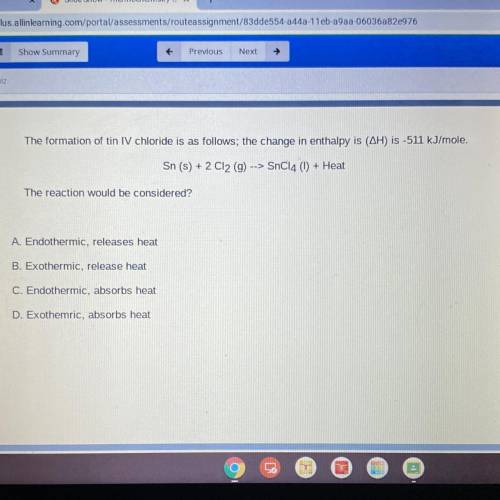
Chemistry, 03.05.2021 19:20 ayowazzzgood
The formation of tin IV chloride is as follows; the change in enthalpy is (AH) is -511 kJ/mole.
Sn (s) + 2 C12 (9) --> SnC14 (1) + Heat
The reaction would be considered?
A. Endothermic, releases heat
B. Exothermic, release heat
C. Endothermic, absorbs heat
D. Exothemric, absorbs heat


Answers: 3


Other questions on the subject: Chemistry

Chemistry, 21.06.2019 14:00, kelyanthecrafte
Which of the following best defines homeostasis? forming identical cells breaking down glucose maintaining stable internal conditions increasing an organism's temperature
Answers: 3

Chemistry, 22.06.2019 09:50, bridgetosanders
What are four significant sources of ghgs that come from wostem washington?
Answers: 2

Chemistry, 22.06.2019 18:00, jeepjose58
What amount of heat is exchanged when 106.2 grams of substance y goes from a liquid at 35 degrees celsius to a solid at the same temperature? melting point of substance y = 35 degrees c; δhvaporization = 3.67 j/mol; δhfusion = 3.30 j/mol. mwsubstance y = 28.22 g/mol. −12.4 j −3.51 x 102 j 1.24 x 101 j 351 j
Answers: 1
You know the right answer?
The formation of tin IV chloride is as follows; the change in enthalpy is (AH) is -511 kJ/mole.
Sn...
Questions in other subjects:



Chemistry, 09.04.2021 03:50



Mathematics, 09.04.2021 03:50

Physics, 09.04.2021 03:50






